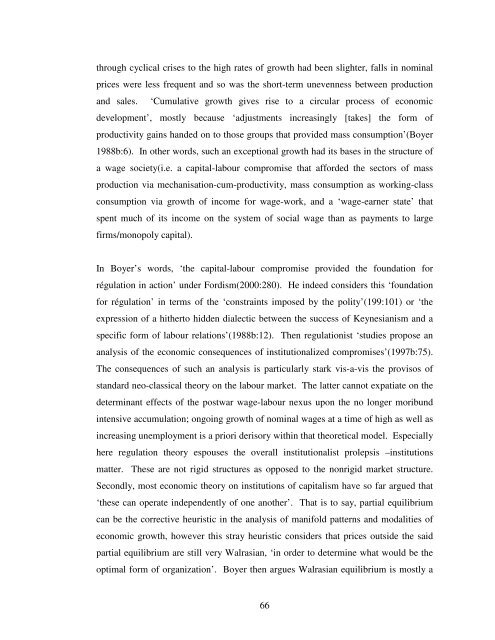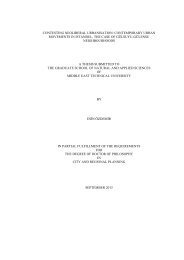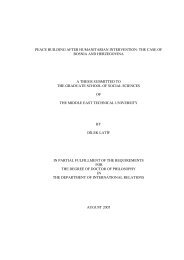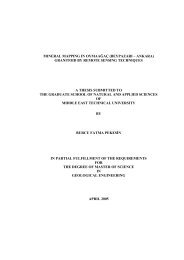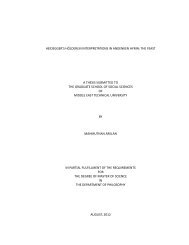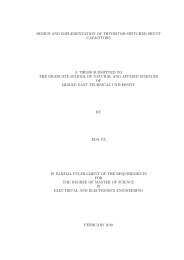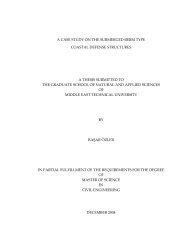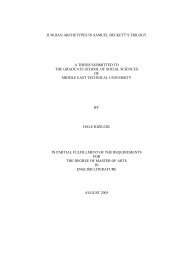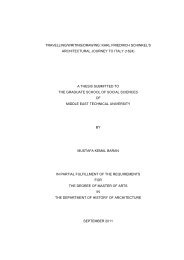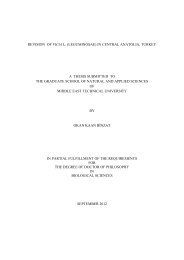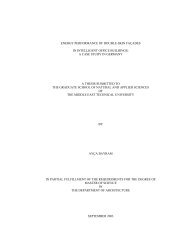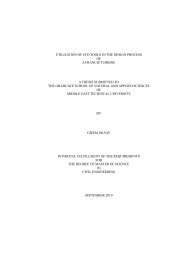View Original - Middle East Technical University
View Original - Middle East Technical University
View Original - Middle East Technical University
You also want an ePaper? Increase the reach of your titles
YUMPU automatically turns print PDFs into web optimized ePapers that Google loves.
through cyclical crises to the high rates of growth had been slighter, falls in nominal<br />
prices were less frequent and so was the short-term unevenness between production<br />
and sales. ‘Cumulative growth gives rise to a circular process of economic<br />
development’, mostly because ‘adjustments increasingly [takes] the form of<br />
productivity gains handed on to those groups that provided mass consumption’(Boyer<br />
1988b:6). In other words, such an exceptional growth had its bases in the structure of<br />
a wage society(i.e. a capital-labour compromise that afforded the sectors of mass<br />
production via mechanisation-cum-productivity, mass consumption as working-class<br />
consumption via growth of income for wage-work, and a ‘wage-earner state’ that<br />
spent much of its income on the system of social wage than as payments to large<br />
firms/monopoly capital).<br />
In Boyer’s words, ‘the capital-labour compromise provided the foundation for<br />
régulation in action’ under Fordism(2000:280). He indeed considers this ‘foundation<br />
for régulation’ in terms of the ‘constraints imposed by the polity’(199:101) or ‘the<br />
expression of a hitherto hidden dialectic between the success of Keynesianism and a<br />
specific form of labour relations’(1988b:12). Then regulationist ‘studies propose an<br />
analysis of the economic consequences of institutionalized compromises’(1997b:75).<br />
The consequences of such an analysis is particularly stark vis-a-vis the provisos of<br />
standard neo-classical theory on the labour market. The latter cannot expatiate on the<br />
determinant effects of the postwar wage-labour nexus upon the no longer moribund<br />
intensive accumulation; ongoing growth of nominal wages at a time of high as well as<br />
increasing unemployment is a priori derisory within that theoretical model. Especially<br />
here regulation theory espouses the overall institutionalist prolepsis –institutions<br />
matter. These are not rigid structures as opposed to the nonrigid market structure.<br />
Secondly, most economic theory on institutions of capitalism have so far argued that<br />
‘these can operate independently of one another’. That is to say, partial equilibrium<br />
can be the corrective heuristic in the analysis of manifold patterns and modalities of<br />
economic growth, however this stray heuristic considers that prices outside the said<br />
partial equilibrium are still very Walrasian, ‘in order to determine what would be the<br />
optimal form of organization’. Boyer then argues Walrasian equilibrium is mostly a<br />
66


